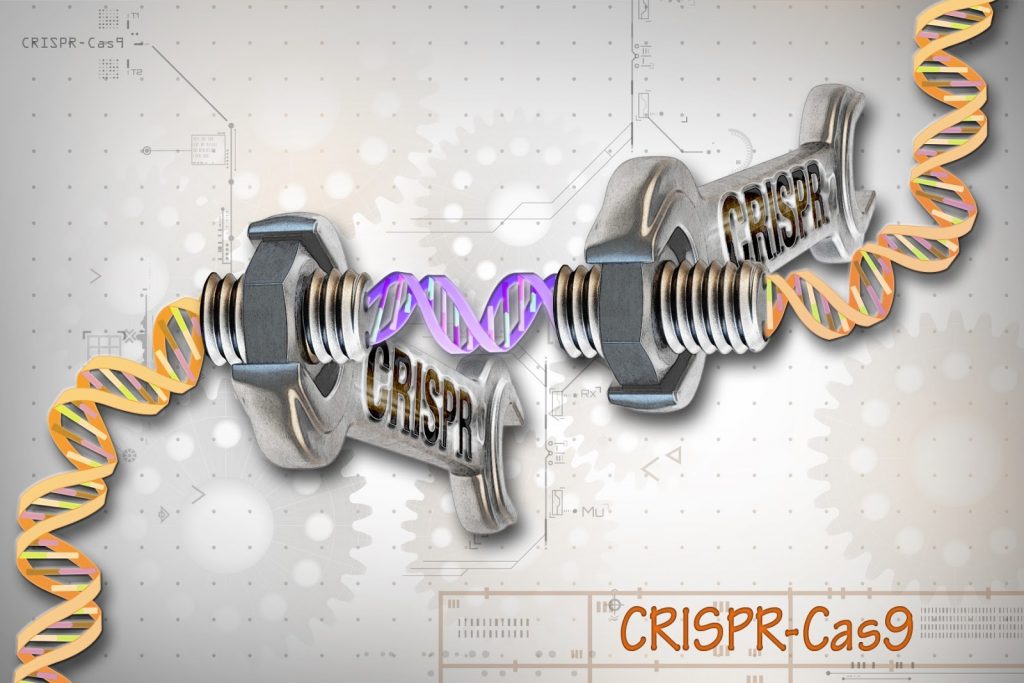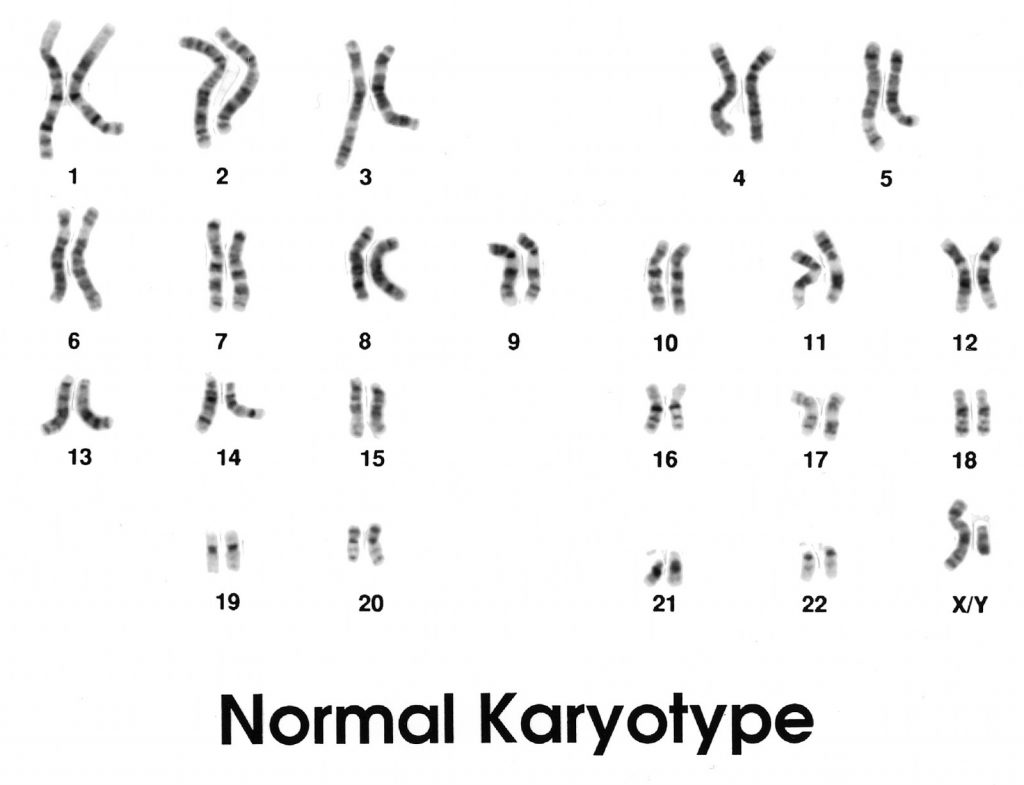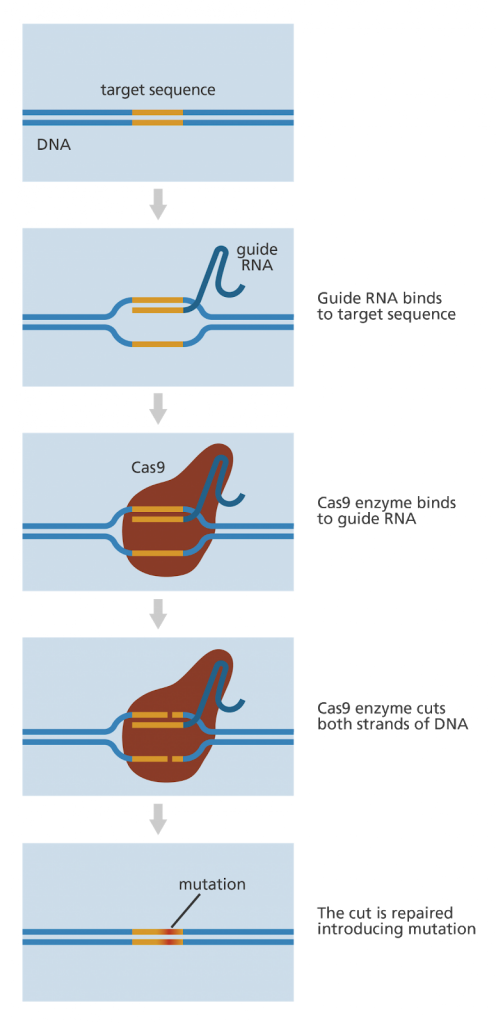By Dominika Trzilova
You’re half of your mom and half of your dad. You get different characteristics from each parent, many of which are determined by the genes your parents give you. Most of the time the genes passed down to you result in good characteristics, such as athleticism. However, not all inherited genes result in good characteristics. Sometimes, we may inherit a version of a gene that is responsible for an incurable disease such as Cystic Fibrosis or Haemophilia. Wouldn’t it be awesome to simply change a ‘bad’ gene before a baby is born to prevent the inheritance of the gene and a bad characteristic (eg. disease) associated with it? Let me introduce you to genome editing.
Our genome is the collection of all genetic information stored as DNA, which is present in chromosomes. Healthy humans have 23 pairs of chromosomes. Twenty-two of those pairs are the same in males and females – these are called autosomes. The twenty-third pair is the sex chromosome – either two copies of X for females or one X and one Y for males. Genes that lead to disease can be present on any chromosome. In an effort to “fix” these bad genes there are currently several methods available for gene editing, but for the purpose of this article, I will only focus on CRISPR-Cas9, which is currently creating a buzz across the world.
However, we first need to consider the ethical concerns surrounding genome editing, specifically germline editing. Germline DNA is the source of DNA for all cells in the body that develop from an embryo. When we edit the germline, we are changing cells that could make a future baby. This begs the question of who has the right to decide how or why a genome will be edited. Other concerns include safety and use of genome editing for “enhancement”. Imagine a parent with a lot of money who pays a researcher to create the perfect baby they want. This could lead to so called “designer babies”, which is certainly a controversial topic.
CRISPR-Cas9 is a genome editing tool that allows us to edit parts of the genome by either removing, changing, or adding a DNA sequence. It is the go-to editing technique used by scientists because of its high speed, efficiency, and accuracy as well as relatively low cost. Where did we get such a powerful technology? CRISPR-Cas9 was first found in bacteria and then adapted for use in eukaryotic cells including human cells. It is made up of two major components – Cas9 and a guide RNA (gRNA). Cas9 is an enzyme that acts as ‘molecular scissors’ and cuts both strands of DNA at a specific location to remove, change, or add DNA sequence. The sequence where Cas9 cuts is determined by gRNA, which is designed to ‘guide’ Cas9 to a specific place in the genome. The sequence of the gRNA needs to be complementary to the DNA target following the standard ‘rules’ where cytosine (C) binds guanine (G) and adenine (A) binds thymine (T) in DNA or uracil (U) in RNA. The cell then repairs the break in DNA (hopefully) leading to a desirable outcome.
Genome editing of the germline is banned or discouraged in most countries, including the US and China. However, a case of the first ever genome edited babies was reported in November 2018 by professor He Jiankui in China. Dr. Jiankui used CRISPR-Cas9 to disable a gene in a set of twin girls, which could potentially protect them from infection with Human Immunodeficiency Virus (HIV). It was later found that disabling this specific gene could also have effects on brain development, specifically leading to improvement of the girls’ cognition and memory. These effects may not have been anticipated by the researcher. Dr. Jiankui’s announcement sparked public outrage for breaking regulations and ethical rules. In January 2019, Dr. Jiankui was fired by his university, but the debate brought up by his experiments on human beings is still in full swing.
To wrap up, genome editing can be a useful tool to fix genetic diseases. However, there are still many things to improve and consider before we routinely perform germline genome editing, if we ever do. Until then, the exciting CRISPR-Cas9 technology can be used in research to help us improve human health in alternative ways.
Edited by Rachel Cherney and Eva Vitucci



